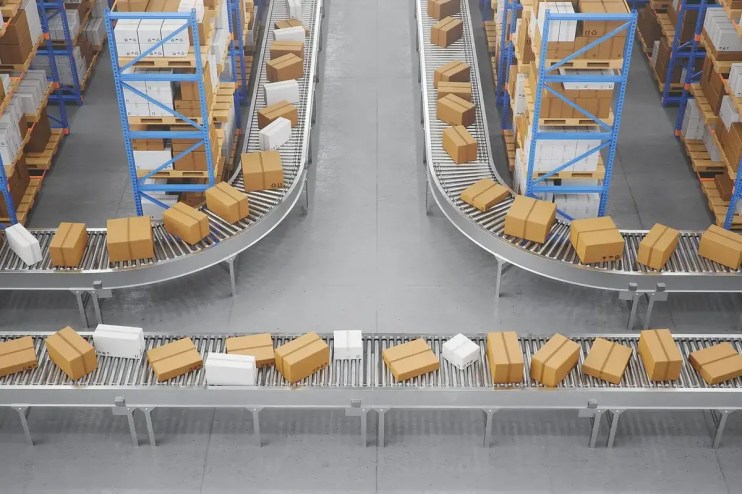‘Silent crisis’ for retailers with record online returns – but can fees stop it?

Online returns are set to top £27bn this year as the ‘silent crisis’ continues to squeeze retailers, with over a fifth of non-food purchases now returned, according to fresh data.
With 10 per cent of shoppers accounting for a quarter of all returns, so-called ‘serial returners’ will make up £6.6bn of that figure – with £1,400 worth of goods returned per customer – according to a report by returns specialists Zigzag and data firm Retail Economics.
Returns fraud includes customers trying to return an item which is ineligible for return, quality disputes, and wardrobing – where a customer returns an item after they’ve worn it.
The trend towards returning items due to over-ordering or wardrobing has been “led by younger shoppers”, according to Zigzag chief Al Gerrie, suggesting a generational shift which is unlikely to just disappear.
While less than one in five baby boomers have engaged in serial returning, nearly two-thirds of Gen Z customers have, according to the study.
“This cohort is exploiting retailers and forcing them to make more controversial and divisive actions,” Gerrie said. He added that the rise of serial returners was “likely to cause alarm” for retailers, who are already under pressure.
An ‘unprecedented’ strain
Returns are “quietly eroding retail profitability in ways many retailers are only just beginning to understand,” chief at Retail Economics, Richard Lim, said.
“The rise of opportunistic shopping behaviours, where many people intentionally buy large quantities of goods with the intention of returning most of them, is placing an unprecedented strain on retailers,” he added.
A high level of returns can cause significant costs to business in the form of lost products, transport, packaging and processing.
Third-party returns platform Optoro has estimated that only around half of returns will be re-sold, while the rest will be sent to landfill.
A recent survey found that UK retailers lose around £5.2bn annually due to online returns alone, and nine out of 10 UK retailers have experienced an increase in the rate of returns fraud or policy abuse in the past 12 months, according to Loop Returns.
According to Loop, nearly two thirds of retailers identified returns fraud as the biggest headache to their organisation.
Retailers start to charge for returns
The prevalence of serial returners has encouraged many firms to implement new policies that hone in on abusive returns behaviours.
Asos has recently updated its Fair Use Policy for “select customers”, which will see it stop offering free returns to serial offenders unless they keep £40 or more of their order.
A similar strategy was rolled out in the US last year and saw the addition of a $4.99 (£3.81) fee on returns for customers who ASOS deemed “constantly take actions that make providing them with free returns unsustainable.”
Other large-scale fashion brands like Zara, Prettylittlething, Wayfair and H&M have also started charging for their online returns after the rise in large-scale takebacks.
“Retailers are facing thinner margins and must urgently rethink their approach to returns management by integrating advanced returns solutions and educating consumers about the implications of their returns, balancing customer satisfaction with profitability,” Lim said.
Will fees drive customers away?
Half of shoppers have said that tighter returns policies are deterring them from making purchases, with 57 per cent adding that they felt restrictions on returns are either inconvenient or unfair, according to Blue Yonder’s first European Consumer Retail Returns Survey.
“[Fees] can substantially decrease the number of returns, alleviating the strain on reverse logistics and the supply chain. However, this strategy needs to be carefully managed to prevent alienating high value customers,” Rob Shaw, MD EMEA at Fluent Commerce, said.
He suggested retailers could introduce two categories of customers: ‘Verified’ ones with a low returns rate who can still access free returns, and a second group for new customers or customers with a higher returns rate, who would only be given the option to return at a fee.
“That way you don’t alienate your best customers but discourage the repeat offenders,” Shaw said.
Tim Robinson, corporate vice president, Returns at Blue Yonder, said: “The challenge now for retailers is to strike a balance between protecting their margins and maintaining a customer-friendly returns experience.”
“Retailers should be looking for ways to do more than tightening their policies.. Gathering data and automating intelligent decision-making for every return will bring costs down through more efficient transportation and reduced waste without impacting the customer experience.
“That data is also incredibly valuable to reduce returns rates, helping retailers to see the patterns of which items are returned, by which customer segments and why, and to act accordingly,” Robinson said.
